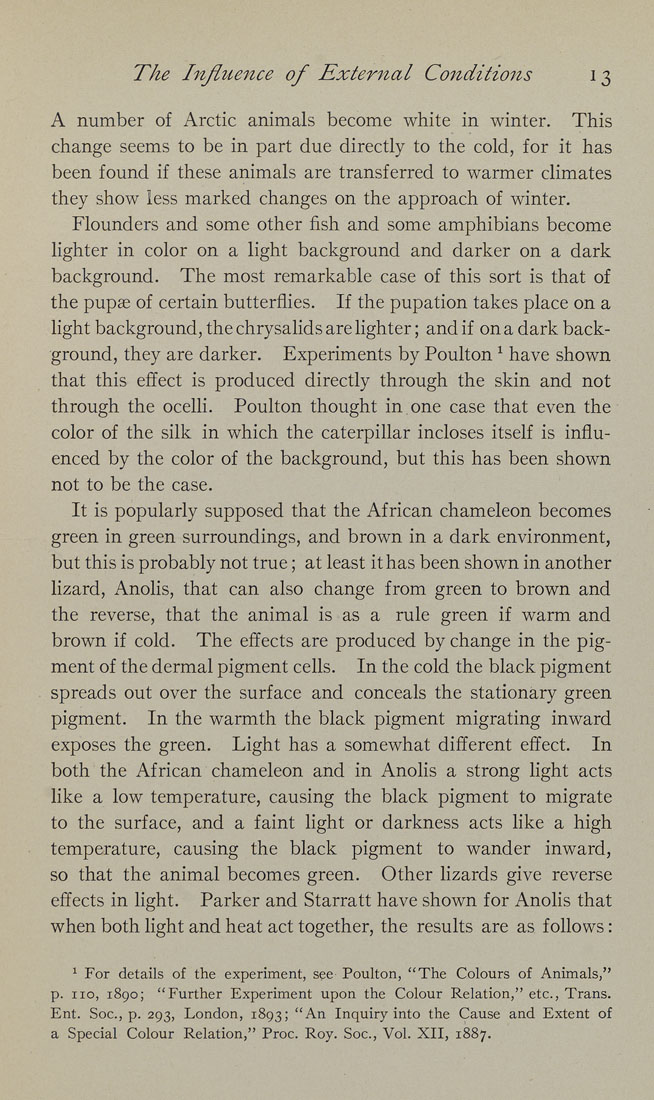The Influence of External Conditions 13
A number of Arctic animals become white in winter. This
change seems to be in part due directly to the cold, for it has
been found if these animals are transferred to warmer climates
they show less marked changes on the approach of winter.
Flounders and some other fish and some amphibians become
lighter in color on a light background and darker on a dark
background. The most remarkable case of this sort is that of
the pupge of certain butterflies. If the pupation takes place on a
light background, the chrysalids are lighter; and if on a dark back¬
ground, they are darker. Experiments by Poulton ^ have shown
that this effect is produced directly through the skin and not
through the ocelli. Poulton thought in one case that even the
color of the silk in which the caterpillar incloses itself is influ¬
enced by the color of the background, but this has been shown
not to be the case.
It is popularly supposed that the African chameleon becomes
green in green surroundings, and brown in a dark environment,
but this is probably not true; at least it has been shown in another
lizard, Anolis, that can also change from green to brown and
the reverse, that the animal is as a rule green if warm and
brown if cold. The effects are produced by change in the pig¬
ment of the dermal pigment cells. In the cold the black pigment
spreads out over the surface and conceals the stationary green
pigment. In the warmth the black pigment migrating inward
exposes the green. Light has a somewhat different effect. In
both the African chameleon and in Anolis a strong light acts
like a low temperature, causing the black pigment to migrate
to the surface, and a faint light or darkness acts hke a high
temperature, causing the black pigment to wander inward,
so that the animal becomes green. Other lizards give reverse
effects in light. Parker and Starratt have shown for Anolis that
when both light and heat act together, the results are as follows:
^ For details of the experiment, see Poulton, "The Colours of Animals,"
p. no, 1890; "Further Experiment upon the Colour Relation," etc., Trans.
Ent. Soc, p. 293, London, 1893; "An Inquiry into the Cause and Extent of
a Special Colour Relation," Proc. Roy. Soc, Vol. XII, 1887.
|








